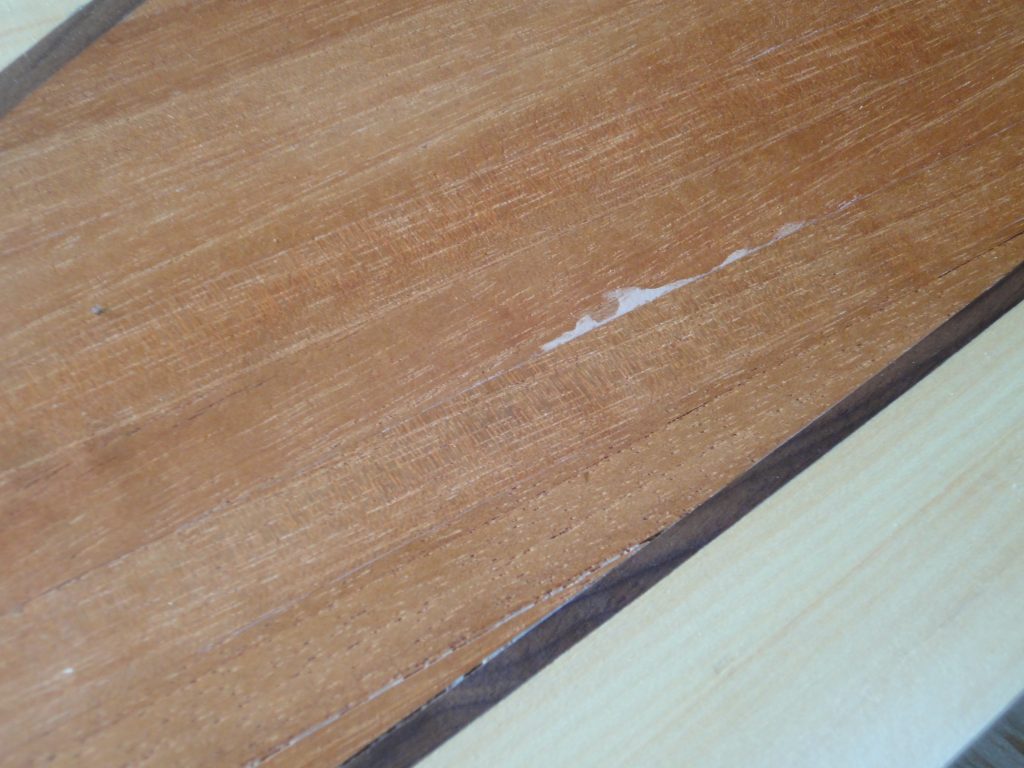Starting off I trimmed as much of the excess fiberglass off as I could. Remember until sanded these edges will be sharp. With the epoxy cured I reconfigured the stand once again, removing the forms, and placed the deck on there upside down. This gave me the first real chance to handle it without worrying about the wood coming apart again and to really inspect the inside. overall I’m quite pleased. There are a few sizable ridges and some definite gaps that will get the thickened and reinforced epoxy filler that I used on the hull, but these are just a few discrete spots.
Working mostly with the scrapers and a bit with the block plane where possible I cleaned up the last half plus the entire cockpit. All that’s left to do is the bow portion another day. The scraping went well with the glue easily coming off and the mostly shallow ridges quickly being eliminated. It cleaned up quite nicely and since the surface was just a bit concave it was no where near as difficult as the hull. It’s also going to be on the inside where no one will ever see it. Again I won’t do a sloppy job but also don’t need to be as concerned about the appearance either.
Next up will be to finish the rest of the deck and then start sanding it.





















































